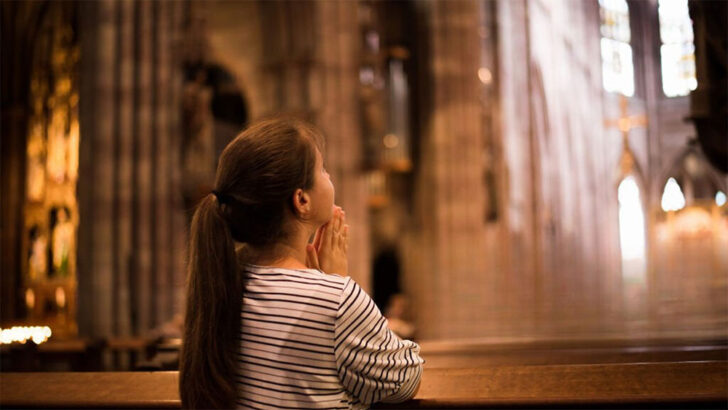James Garavan
We often hear priests speak about how the Church ought to accommodate the ever-diminishing young Catholic population. Today I sat down with two young Catholics, Conor and Isabelle to discuss life as a young Catholic and how they think, as a young person, Irish parishes and schools are failing to support the youth.
We began by speaking of how parishes can do more to evangelise the youth.
The modern parish landscape
Conor’s experience in his local parish revealed some concerning trends. He noted that there was little catechism at all in his parish. Middle-aged women with good intentions but little theological study primarily ran the parish, and attendance at Mass by teenagers was alarmingly low—often fewer than ten young people would participate. Conor maintains that the lack of intellectual engagement served as a deterrent for many young people and that a dedicated group for Leaving Cert and college-aged individuals could be a game-changer.
Isabelle believes that young Catholics are drawn to upholding Catholic tradition as opposed to adjusting to suit the current culture. She thinks it’s important to uphold this and recognise what the young people in the Church want to see as actual Catholicism rather than a watered-down pseudo-Catholicism which is manifested by a desire to cater towards non-practising youth.
“This tradition not only encourages young people to actively participate in the Mass but also instils a sense of responsibility and connection to the Church”
Both agree that such a group would provide a space for young parishioners to connect, and discuss their faith, in an intelligible manner. It’s also important for young Catholics to see good role models in the Church whether that be other young people practising their faith or older people with positive stories of their experiences as Catholics. “To promote this, parishes could hold and promote youth events for young people to meet other practising Catholics their age or talks by people who can encourage them to hold onto and share their faith”, says Isabelle.
Conor also advocates for bringing back altar boys to churches. This tradition not only encourages young people to actively participate in the Mass but also instils a sense of responsibility and connection to the Church. By involving youth in the liturgy, parishes can create a more vibrant and inclusive worship experience. Even if catechesis classes were introduced to young people, there is an even greater understanding one can derive through real participation.
Failure of the Christian Brothers
Conor recalls that during his first year at the Christian Brothers school, there was a sense of alive religiosity. The school held Masses, had a dedicated prayer room, and even employed a chaplain. However, over time, this religious atmosphere waned. The once-denominational prayer room gradually transformed into a non-denominational space, now primarily used by Muslim students. Conor laments the loss of a distinct Catholic identity within the school by the fault of the timid clergy who let their school succumb to the disease of secularisation. One poignant change was the removal of the Our Lady of Fatima statue in this room. This iconic representation of the Virgin Mary held deep significance for generations of students. However, it was replaced with a salt lamp—an item associated more with modern wellness trends than religious devotion. Conor reflects on how this shift is emblematic of the broader secularisation of Catholic institutions. Conor’s experiences in the classroom were equally disheartening. His junior certificate teacher lacked a comprehensive understanding of Catholicism. Instead of engaging students in meaningful discussions about faith, the class veered off-topic. Conor describes it as a “doss class,” where the teacher would casually mention drugs or alcohol but rarely touched upon explicitly religious matters. Leaving certificate did not get much better as Conor’s teacher’s assertion that socialism is the closest ideology to Christianity – it should be noted that Paragraph 2425 of The Catechism states: “The Church has rejected the totalitarian and atheistic ideologies associated in modem times with ‘communism’ or ‘socialism”. Apart from misrepresentation, intolerance was also widespread. Too often, Conor contends, anti-clerical ‘jokes’ feature in the classroom. A humour that would rightfully never be allowed at the expense of a different religion.
Isabelle also has had the same experience in her ‘Catholic’ school. “As children, we are taught, in Catholic schools, a watered-down version of Catholicism”. For children whose main source of religious education is their school’s religion curriculum, “Catholicism is, in a nutshell, a few songs about friendship and some colouring-in pages”. With such a weak foundation of religious education, it seems completely unsurprising to her that most young people lose their faith and stop attending mass by the time they enter college. Isabelle also notes that it can be extremely difficult for Catholics to openly practise their faith in such a hostile school environment. Such an environment is best explicated in Conor’s school’s annual compulsory ‘Gay Standup Week’, again symbolic of a significant departure from Catholic teaching in an alleged Catholic school. By dedicating a compulsory week to gay awareness, the school insisted that students learn about queer culture, queer films, and queer celebrities.
“Just as people gravitate towards the shine of a diamond, so too will people approach real, unapologetic Christianity”
One couldn’t help but wonder if the Christian brothers regard queer culture as a more prescient issue than the Gospel. All in all, both Isabelle and Conor fundamentally identify the same problems and I am sure this voice is echoed by so many young Catholics. The clergy ought not to be ashamed of their faith. Their desire to get with the times rests on the sacrificial table of authentic Catholicism. Just as people gravitate towards the shine of a diamond, so too will people approach real, unapologetic Christianity.




